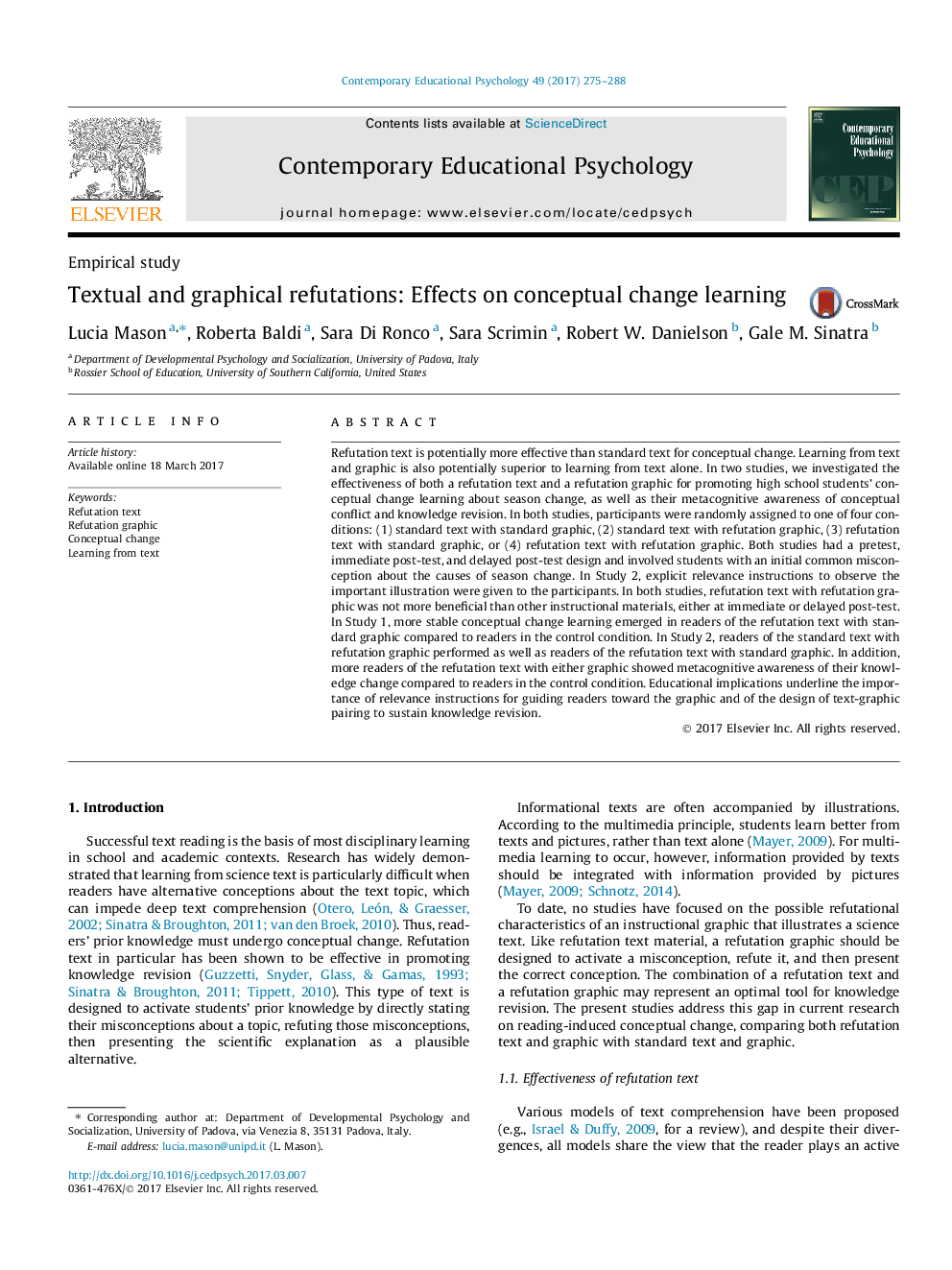| Article ID | Journal | Published Year | Pages | File Type |
|---|---|---|---|---|
| 4937909 | Contemporary Educational Psychology | 2017 | 14 Pages |
Abstract
Refutation text is potentially more effective than standard text for conceptual change. Learning from text and graphic is also potentially superior to learning from text alone. In two studies, we investigated the effectiveness of both a refutation text and a refutation graphic for promoting high school students' conceptual change learning about season change, as well as their metacognitive awareness of conceptual conflict and knowledge revision. In both studies, participants were randomly assigned to one of four conditions: (1) standard text with standard graphic, (2) standard text with refutation graphic, (3) refutation text with standard graphic, or (4) refutation text with refutation graphic. Both studies had a pretest, immediate post-test, and delayed post-test design and involved students with an initial common misconception about the causes of season change. In Study 2, explicit relevance instructions to observe the important illustration were given to the participants. In both studies, refutation text with refutation graphic was not more beneficial than other instructional materials, either at immediate or delayed post-test. In Study 1, more stable conceptual change learning emerged in readers of the refutation text with standard graphic compared to readers in the control condition. In Study 2, readers of the standard text with refutation graphic performed as well as readers of the refutation text with standard graphic. In addition, more readers of the refutation text with either graphic showed metacognitive awareness of their knowledge change compared to readers in the control condition. Educational implications underline the importance of relevance instructions for guiding readers toward the graphic and of the design of text-graphic pairing to sustain knowledge revision.
Related Topics
Social Sciences and Humanities
Psychology
Applied Psychology
Authors
Lucia Mason, Roberta Baldi, Sara Di Ronco, Sara Scrimin, Robert W. Danielson, Gale M. Sinatra,
